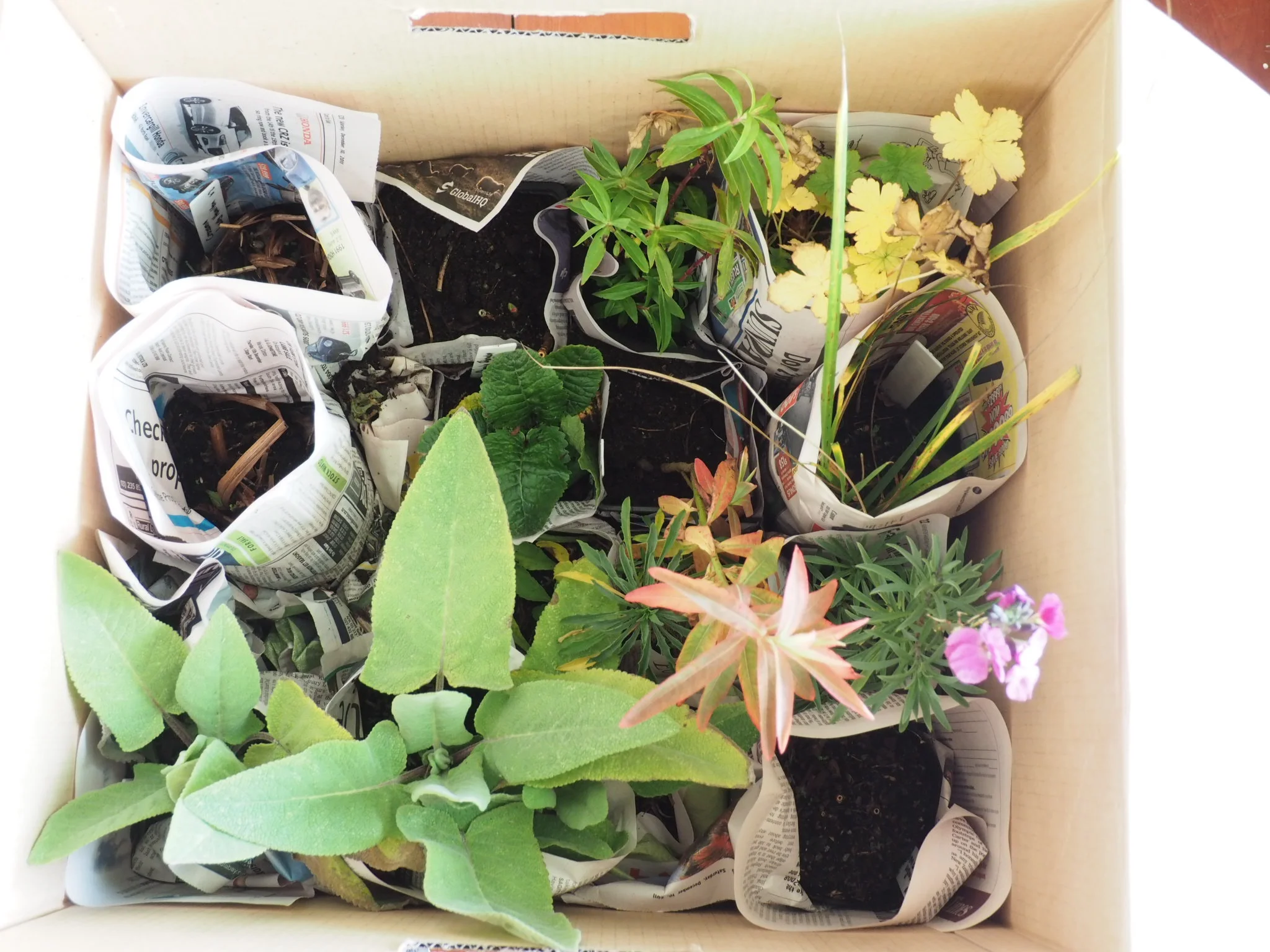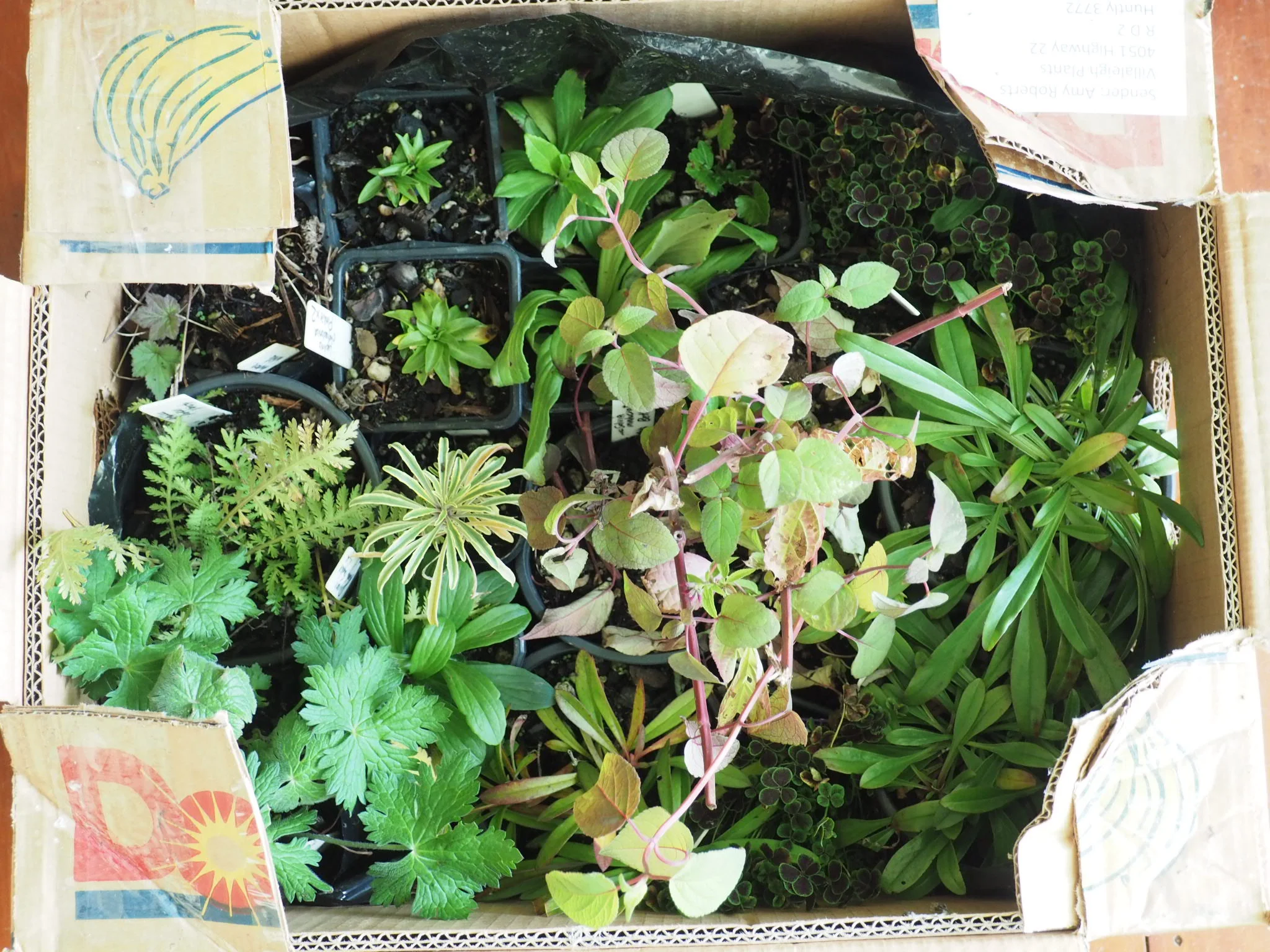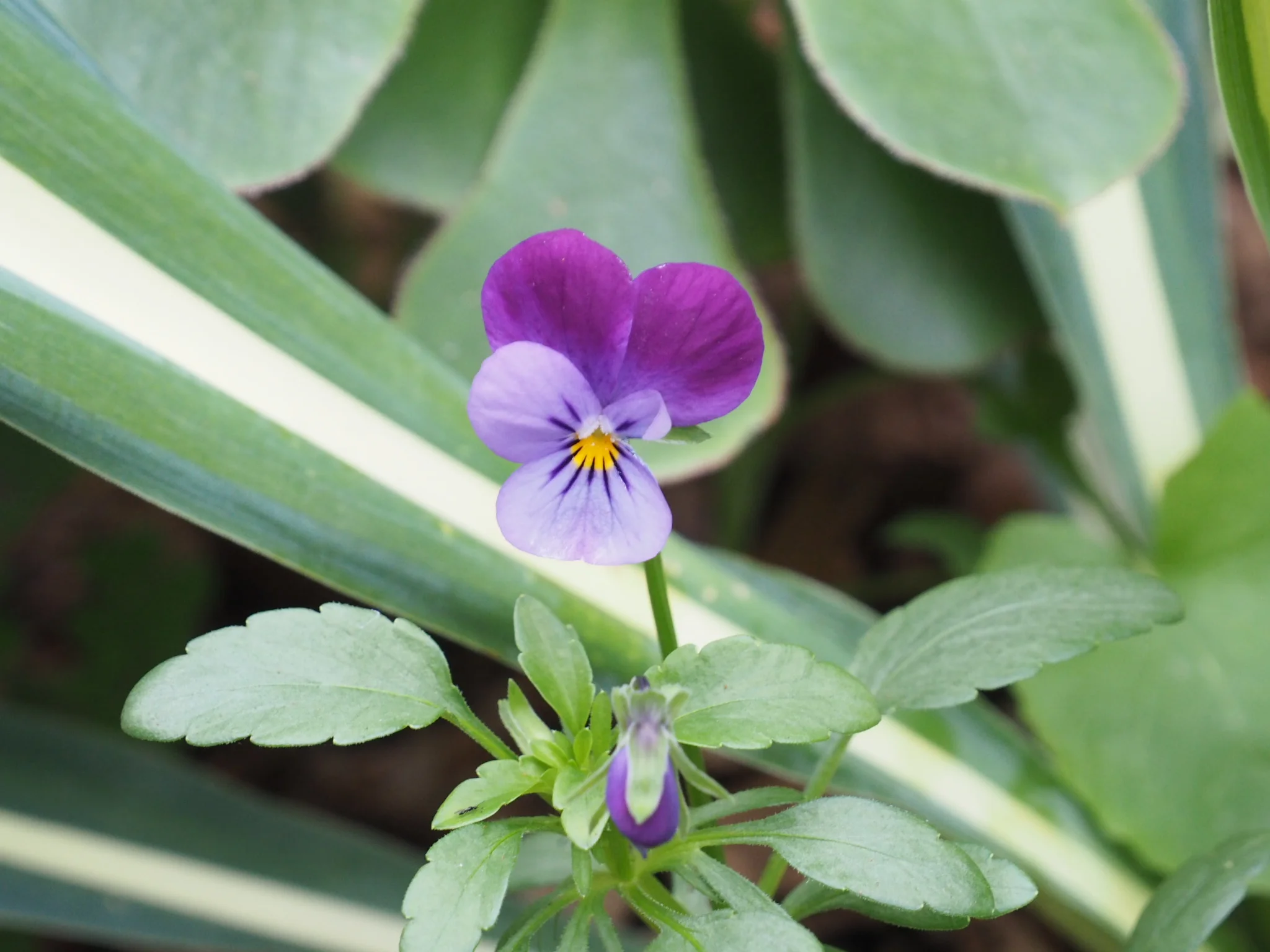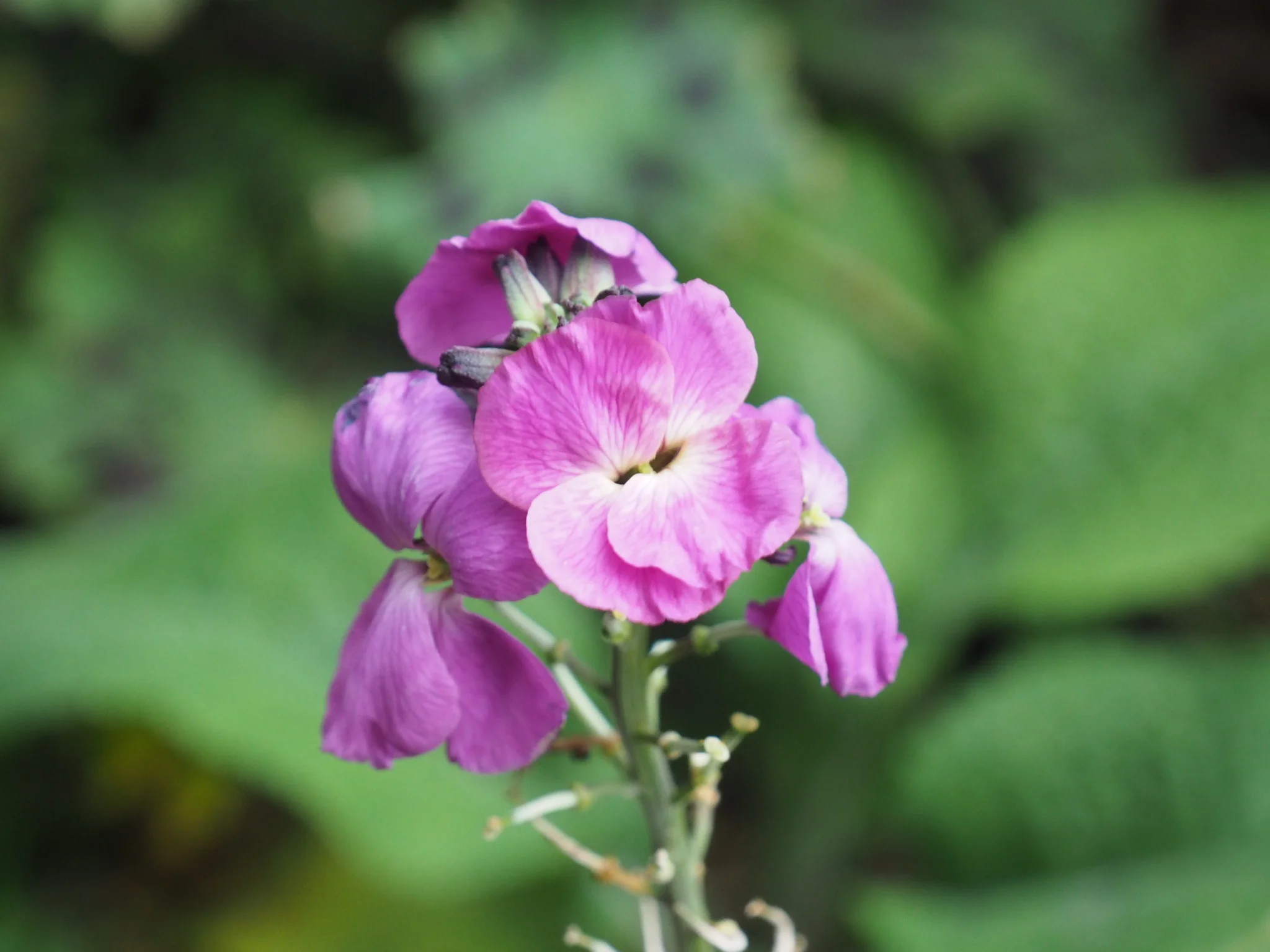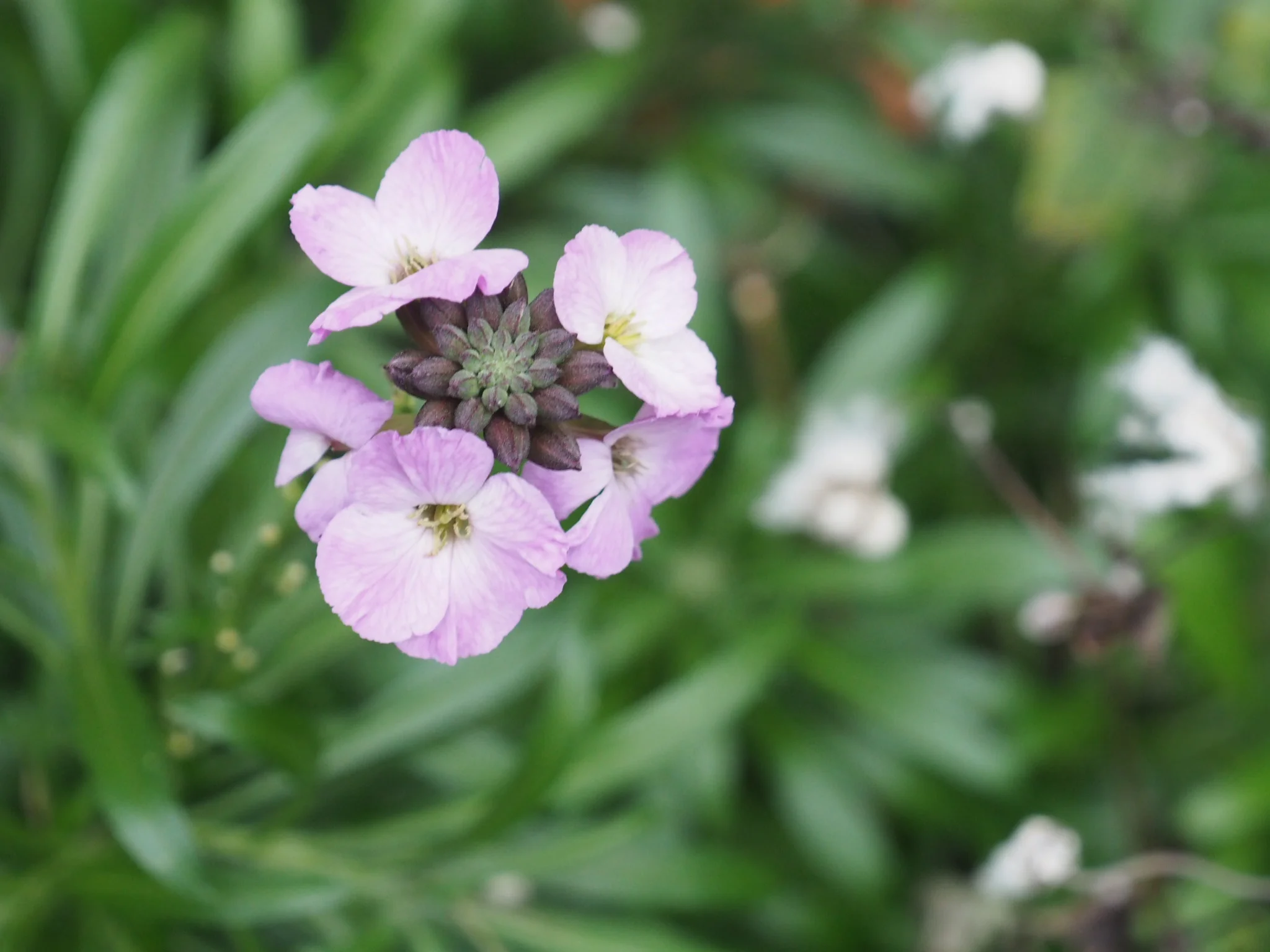My garden looks different in winter. It’s damp and brown and feels a bit empty. There are dead leaves everywhere: overflowing the gutters, blown into piles in corners, sunbathing on the grass and smothering small low-down plants in great wet sandwiches. The garden is dotted with the woody skeletons of deciduous trees: oak, sycamore, apple, snowball, pear and acers. All of them ephemeral living sculptures. Perfect plants for gardens with extremes in sun and shade in summer and winter.
Etoile de Hollande hips and bronze fennel.
My oak tree, Quercus robur.
This blog is about a number of different things. It’s about sweet peas and growing seeds. It’s about bespoke nurseries and about a couple of excellent books. It’s about my first real effort at growing bulbs and it’s about mop buckets and dustbins. It’s also about Lady Hamilton and a plant called Montbretia. There are also a few photos of the Wellington Botanic Garden.
Montbretia or Crococosmia x crococosmiiflora.
Last week I bought two Crocosmia plants from Marshwood Gardens. I already have lots of wild Crocosmia growing in one part of my garden, it’s common name is Montbretia. Montbretia has orange flowers, which you can see in the photograph above. Crocosmia ‘Lady Hamilton’ (from Marshwood) is a bit more refined with its iris-like leaves and yellow flowers that turn apricot. At the moment it isn’t much to look at but give it a few months and its leaves will start to grow. I like to know the story behind the name so I did some research. Crocosmia ‘Lady Hamilton’ was bred by George Davidson in Norfolk in 1906. He must’ve fallen under the ‘Lady Hamilton’ spell, her life makes for quite a story.
Before Lady Hamilton became Lady Hamilton she was Amy Lyon, the blacksmith’s daughter from Cheshire. Her father died when she was a baby. Amy, later known as Emma, came from an impoverished background with a fairly limited education. She was far from stupid. If she hadn’t been beautiful, resourceful, in possession of a magnetic personality and a free-spirit then she wouldn’t have been remembered.
Emma started out as a maid, then moved onto acting and modelling. When she was 26 she married Sir William Hamilton who was 60. He was rich and powerful and besotted with her. Two years after that she met Horatio Nelson (who was a friend of Sir William’s) and the two of them fell in love. Horatio left his wife and moved in with the ‘Hamiltons’. Both men eventually died, though not at the same time. The two men left her money and property, which she promptly drank away, racking up a lot of dept that she couldn’t repay. Lady Hamilton ended up in prison and thanks to the kindness of her friends she escaped to France with her daughter Horatia. Lady Hamilton died at the age of 49 from drinking related illnesses.
In a long winded and slightly random fashion I’m trying to make a comparison between Lady Hamilton the person and Montbretia the plant. Both of them are rule breakers. Lady Hamilton broke through class barriers, which was an incredible feat for a woman at that time. She was celebrated and despised. Montbretia, too, is a beautiful survivor, more despised than celebrated. It gets a firm foothold in messed-up ecosystems like ditches and pioneering forests.
Montbretia or Crococosmia x crococosmiiflora comes from the Crocosmia genus. Crocosmias belong to the Iris family and come from Southern and Eastern Africa and Madagascar. All Crocosmia plants grow from basal underground corms.
Box of plants from Marshwood Gardens. The two Crocosmia ‘Lady Hamilton’ plants are in the top left of the box.
The Department of Conservation has labelled Montbretia a pest plant in New Zealand. They say it displaces native species such as streamside herbs and ferns. They use the words infestation and invasive when referring to Montbretia. And while it’s incredibly vigorous it tends to grow in already weak and compromised ecosystems. Montbretia is classed as an exotic or alien plant by conservationists.
If I were a good conservationist I’d try a bit harder and remove the Montbretia from my garden. But I’m not. I’m in the process of changing my views on plant conservation. This is based on two things: my own experience as a gardener and regular walker/runner in local forests and the book ‘The New Wild’ by Fred Pearce. According to recent scientific research there isn’t a forest on earth that hasn’t been altered by humans. Consequently, there are no such things as virgin pristine ecosystems. We live in the Anthropocene age - the age of humans. Humans have touched, one way or another, every part of the planet.
Here’s what Fred has to say. ‘The more damage that humans do to nature - though climate change, pollution, grabbing land for intensive agriculture and plantation forestry - the more important alien species and novel ecosystems will be to ensuring nature’s survival. Aliens are rapidly changing from being part of the problem to part of the solution.’
I don’t want to sound like an evangelist but ‘The New Wild’ has made a big impact on my thinking. Fred Pearce offers an alternative and compelling point-of-view on the alien versus native debate. I highly recommend this book for anyone interested in conservation and plants. It will change the way you see nature…It’s the reason I’m letting Montbretia hang around in my garden. This book is a bright light in the darkness of climate change doom.
Sweet pea packets.
I’ve just finished reading Grow Your Own Cut Flowers by Sarah Raven. I read it on my Kindle because I didn’t have time to order it from a bookshop, and it was cheaper. The downside to reading a garden book on the Kindle is that the photographs are black and white. I read the book because I wanted to find out how Sarah Raven grows flowers.
I’d read ( in Arthur Parkinson’s book) that Sarah Raven sowed her sweet pea seeds in winter. I wanted to find out exactly how she did it so I could do the same. What I love about Sarah’s book is that it’s down to earth, practical and inspiring. Sure it’s a book about growing cut flowers but really it’s a book about growing annuals, biennials, bulbs and dahlias.
Sweet peas are one of my favourite flowers but I’ve never grown them successfully in my garden. I’ve always sowed the seed too late or sowed them in the wrong spots. I have 6 packets of sweet pea seeds and I’m going to grow them properly this year.
Sarah Raven recommends growing sweet pea seeds in root trainers (a special kind of long pot that you can split open - I think) or loo rolls (which is what I’m using, being of a recycling disposition). She reckons you don’t need to soak the seeds or put a nick in them if you’re sowing them in winter. First, fill the loo roll with compost and plant two seeds in each (the two stay together forever) and water. Put them somewhere to germinate (like a cold frame), which will take a couple of weeks. Pinch out the tip when it grows to a height of about 7cm (this promotes bushy growth). Once the roots start growing out the bottom of the loo roll then it’s time to repot the plant into a bigger pot. Plant it out into the garden in spring.
Below is how you turn a cardboard roll into a pot. All it takes is 4 small cuts and 4 folds.
Cardboard roll pot.
I’m going to plant my sweet peas in dustbins, which have yet to be bought. I’ll place these in my brick courtyard, which is sheltered from the wind and gets excellent summer sun.
Thanks to Arthur Parkinson and his book ‘The Pottery Gardener’ I’ve started using dustbins and buckets as pots. It doesn’t take long for them to lose their shine and take on a weathered patina ( see the photo of sedum in a bucket). I drill a few holes in the bottom of the bins and buckets and fill them up with soil. I added chunks of polystyrene in the bottom of the dustbins to make them lighter. It’s a good way of recycling something thats hard to get rid of.
In the past I’ve been a bit rude about tulips. They seemed like expensive and fussy plants to grow. But this year I’ve decided to give them another chance, along with some other bulbs: daffodils (a bag of unnamed ones from a daffodil farm on the Kapiti Coast and Daffodil ‘Erlicheer’), Hyacinth ‘Woodstock’ and Muscari ‘Blue Magic’. All but the ‘Erlicheer’ daffodils have been planted in the pots in the photo below.
In two of the dustbins I planted double layers of Darwin tulips, which are very hardy, in what Sarah Raven calls ‘bulb lasagne’. Tulips like to be planted deeply and hopefully I dug them in deep enough. I didn’t chill the Darwin tulips before I planted them. If they don’t grow or they’re puny I’ll know why.
In the other two dustbins I planted 2 different kinds of orangey bulbs, which had all been chilled prior to planting. They’re Orange Princess and Asahi. I’ve planted a few other plants in the pots in the hope they will soften the metal edges.
Sedum mexicana ‘Golden Planet’ planted with pineapple lily, Eucomis.
The daffodils are starting to sprout.
I recently bought 3 plants of Sidalcea malviflora ‘Purpetta’ from Villaleigh Plants. I’ve never grown this plant before and I’m interested to see how fast it grows and whether it will drape artfully over the rim of the pot.
Sidalcea malviflora ‘Purpetta’.
I bought a Plectranthus ‘Velvet Elvis’ last year for my shade garden. It likes full to part shade. I took a number of cuttings, which have rooted. I’m trying them in these pots. It might be too sunny for ‘Velvet Elvis’ but you never know what a plants limits are until you try them in different spots.
Plectranthus ‘Velvet Elvis’.
My front porch is my glasshouse come cold frame. I grow seedlings and cuttings here. It faces north-east and doesn’t get the late afternoon sun. I have to keep turning the seedlings around because they keep growing towards the sun and getting bent stems. My biggest problem is that I’m running out of space.
I’ve started using lidded plastic boxes as cold frames. They’re ugly but practical. I have a long narrow garden and in hilly Wellington the availability of sun changes drastically from summer to winter. Now I can follow the sun around with these portable plastic boxes. At night when the temperature drops I can put the lids on. And while I dream of having a greenhouse made out of recycled windows and doors I’m a long way off from ever having one. There’s the chimney that needs coming down and the fireplace fixed up, the front steps need to be tiled, the lounge and dining room need curtains and then there’s the puppy!
Currently gracing my cold frame are 3 kinds of seedlings. Two kinds of wallflowers from Owairaka Seeds (to plant with the tulips), Erysium chieri ‘Giant Pink’ and ‘Velvet Wine Wallflower Collection’. I didn’t label the two types properly and I don’t know which is which. There’s also some chocolate cosmos from Kings Seeds, which I might’ve planted too late in autumn - it hasn’t sprouted yet.
Today I potted up some black hollyhocks and two weeks ago I potted up some white lupins ‘Snow Pixie’. I’m going to end up with far too many plants.
Erysium chieri ‘Giant Pink’ and ‘Velvet Wine Wallflower Collection’
I’m a novice when it comes to sowing seeds. Thanks to Sarah Raven’s book I’m feeling more confident. I don’t get very excited about growing food from seed but I get overjoyed at the prospect of growing ornamentals. It keeps the birds and bees happy at any rate. She says that if you want to grow flowers for picking then you need to grow annuals and biennials. These are the ‘cut and come again’ flowers. Sarah has a few rules. 1. Don’t sow seeds too early. 2. Prepare the soil. 3. Don’t sow too thickly. 4. Thin out the seedlings. 5. Thin again. 6. Provide support. I’ve gone a bit seed mad. I have 8 different types of cosmos to plant in spring from 3 different seed suppliers. So now I need to add another seed sowing rule, 7. Make sure you have enough bare soil for all your seedlings.
In addition to the 7 types of cosmos above I also have a packet of cosmos ‘Tango’ from Egmont Seed Company.
Unfortunately New Zealand doesn’t have the sheer number of different plants that the UK has. We have strict biosecurity laws to protect our horticulture and agriculture industries. You have to look hard to find interesting plants. It seems as if every week a new plant is added to the ‘invasive plant’ list. Luckily there are a few bespoke nurseries that specialise in growing plants they’re passionate about. Luckily most of these nurseries sell their plants online. Below is a photograph of a box of plants I ordered from Villaleigh Plants. It arrived the same day as the plants I ordered from Marshwood Gardens. I’m so thankful to nurseries like these. I hope gardeners keep supporting them and I hope more people feel inspired to setup bespoke nurseries.
Box of plants from Villaleigh Gardens.
Here are 3 purple flowers growing in my garden this week. A little viola that sowed itself, My new wallflower from Marshwood Gardens called ‘Pat’s Purple’ and my trusty wallflower ‘Lilac Joy’, which I grew from a cutting off its parent that’d grown too scrappy.
I’m told, by @oldtimersgardening on Instagram that the secret to growing wallflowers is to keep pruning them, even when they’re flowering. This stops them getting leggy, which they’re all prone to do.
Wallflower, Erysimum ‘Pat’s Purple’.
Wallflower, Erysimum ‘Lilac Joy’.
Last week I went for a run through the Wellington Botanic Garden. Here are a few photos I took on my phone.
This a view from a path running through the conifer grove. Conifers have become unfashionable, which is a shame. They have a lot to offer. They’re evergreen, their foliage is lush and aromatic and they look statuesque when paired with filmy gossamer leaved plants.
All the magnolia trees are growing buds. Some of them, like the one above, have burst into flower. It’s very early for this sort of behaviour. I blame Wellington’s very mild autumn for confusing the poor trees.
Below is a stunning late autumn, early winter flowering shrub. Luculia gratissima has scented lilac flowers.
And to finish off here’s a photo I took yesterday. My dog and I went for a run in the local forest. The sun was burning off the low mist on the hills. It was a beautiful morning. My local forest is what Fred Pearce would call a ‘novel ecosystem’. Novel ecosystem’s appear when the original ecosystem has been completely decimated. My local forest was clear-felled a hundred or so year ago to make way for agriculture. Forest’s don’t care whether a plant is well bred or not. If it grows it grows and if it doesn’t then it doesn’t. It doesn’t matter that some of the trees are exotics and some natives. It’s a forest and the more it grows and the more that people let it grow, uninterrupted, then the denser it becomes. Dense with different kinds of plants and animals.
You might remember that several paragraphs up I mentioned the word ‘puppy’. Such an evocative 5 lettered word. We’re getting a puppy in 2 weeks. It’s completely unplanned, but we have Hester the rat to thank for that. My son, whose been banging on about how much we need a puppy for years, is very excited. Up until two weeks ago all he got was ‘NO’. He’s named it after his favourite football player. You’ll meet Moussa in the next blog.
I’m busy trying to puppy-proof the garden. I need to buy lots of bamboo sticks and a lot more dustbins and buckets to provide impenetrable barriers. I really hope that this puppy isn’t the kind that likes to dig up plants.





